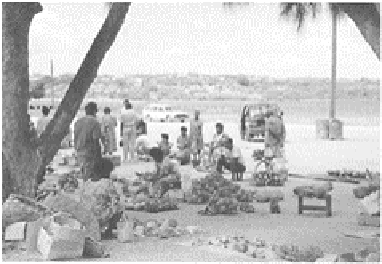Geography Reference
In-Depth Information
ANALYSIS OF TOURISM'S SOCIAL IMPACTS
The social impact of tourism refers to the manner in which tourism and travel effects
changes in collective and individual value systems, behaviour patterns, community
structures, lifestyle and the quality of life (Hall 1995; Mason 2003). The major focus of
research on the social impacts of tourism is on the population of the tourist destination
rather than on the tourist generating area and the tourists themselves, although significant
work is also done in this area particularly with respect to outdoor recreationists. The
variables which contribute
Plate 4.3:
Market scene, Vanuatu,
South Pacific. Local communities can
benefit from visitors if they are
encouraged to patronise local facilities
rather than being cocooned in the
environmental bubble of resort hotels.
to resident perceptions of tourism may be categorised as either extrinsic or intrinsic
(Faulkner and Tideswell 1996). Extrinsic variables refer to factors which affect a
community at a macro level (e.g. stage of tourism development, the ratio between tourists
and residents, cultural differences between tourists and residents, and seasonality).
Intrinsic variables are those factors which may vary in association with variations in the
characteristics of individuals in a given population (e.g. demographic characteristics,
involvement in tourism and proximity to tourist activity) (Hall 1998).
Researchers from a number of disciplinary backgrounds have conducted work on the
social impacts of tourism. For example, interest in tourism marketing strategies and
increased concern for the social consequences of tourism led to the social psychology of
tourism becoming a major area of research (e.g. P.L.Pearce 1982, 2005; Stringer 1984;
Stringer and Pearce 1984). Research has focused on aspects of the tourist experience as
diverse as tourism and culture shock (Furnham 1984), and tourist-guide interaction
(P.L.Pearce 1984). Research in the marketing of the tourist product sees attention being
paid to the demand, motivations and preferences of the potential tourist (e.g. R.L.Jenkins
1978; Van Raaij and Francken 1984; Kent et al. 1987; D.G.Pearce 1989; S.L.J. Smith

